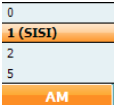
AC40 Support
Welcome to the product training for AC40 audiometer. On this page you will find an overview of all the available training materials and support.
Available Training
-
Synching Test Results to Diagnostic Suite
-
Accessing Saved Client Records
-
Saving Client Records
-
Load User Settings
-
Speech Settings
-
Common Settings
-
Setup Menu
-
How to Adjust Monitor Settings
-
Speech Display Screen and Function Keys
-
Tone Display Screen and Testing Functions
-
Keyboard Buttons
-
LCD Display Overview
-
Audiometer Overview
-
Hughson-Westlake Procedure
-
Masking Level Difference (MLD)
-
Threshold Equalizing Noise (TEN) Test
-
Alternate Binaural Loudness Balance Test
-
Quick Speech in Noise (QuickSIN)
-
Weber Test
-
Stenger Test
-
Pure Tone Audiometry
-
Speech Audiometry
-
Pediatric Noise
-
Tone Decay Test
-
Békésy Audiometry
-
High Frequency Audiometry
-
Audiometric Masking
-
How to print without a database
-
BKB-SIN speech-in-noise test
Short Increment Sensitivity Index
What is the short increment sensitivity index (SISI) test?
The short increment sensitivity index (SISI) test measures the ability to recognise 1dB increases in intensity during a series of bursts of pure tones presented 20dB above the pure tone threshold for the test frequency. It can be used to differentiate between cochlear and retro cochlear disorders, as a patient with a cochlear disorder will be able to perceive the increments of 1dB, whereas a patient with a retro cochlear disorder will not.
Required equipment
- Headphones or insert phones
- A response button

SISI test procedure
- Press and hold the Tests button and select SISI: Short increment sensitivity index using the scroll wheel on the audiometer.
- Select Tone or Warble in channel 1. If cross hearing is suspected, masking should be presented in channel 2.
- Select the desired test frequency and set the input level 20dB above threshold using the scroll wheel on the audiometer.
- In the most common type of SISI test, the incremental steps are set to 1dB. By pressing and holding the function button AM, it is possible to change the increments. Prior to presenting the actual test of 1dB increments, a trial of 2 or 5dB steps can be employed to ensure that the patient understands the test procedure and what will be required. If you are uncertain about the responses from the patient, 0dB can be used.

- Explain to the patient that they will now hear a series of tones. If suddenly there is a change in the loudness of the presentation of the tone, the response button should be pushed.
- Start the test by pressing
 . The system will automatically count the number of reactions from the patient. Note that the system needs 20 presentations to calculate a SISI score.
. The system will automatically count the number of reactions from the patient. Note that the system needs 20 presentations to calculate a SISI score. - Repeat the test for all desired test frequencies.
- Press
 to end the test.
to end the test. - Save the SISI test by clicking Save Session.
SISI test results
The SISI test should be conducted at 20dB SL for all frequencies tested. If the patient gets a high score on the SISI test, this could be indicative of retro cochlear damage.
